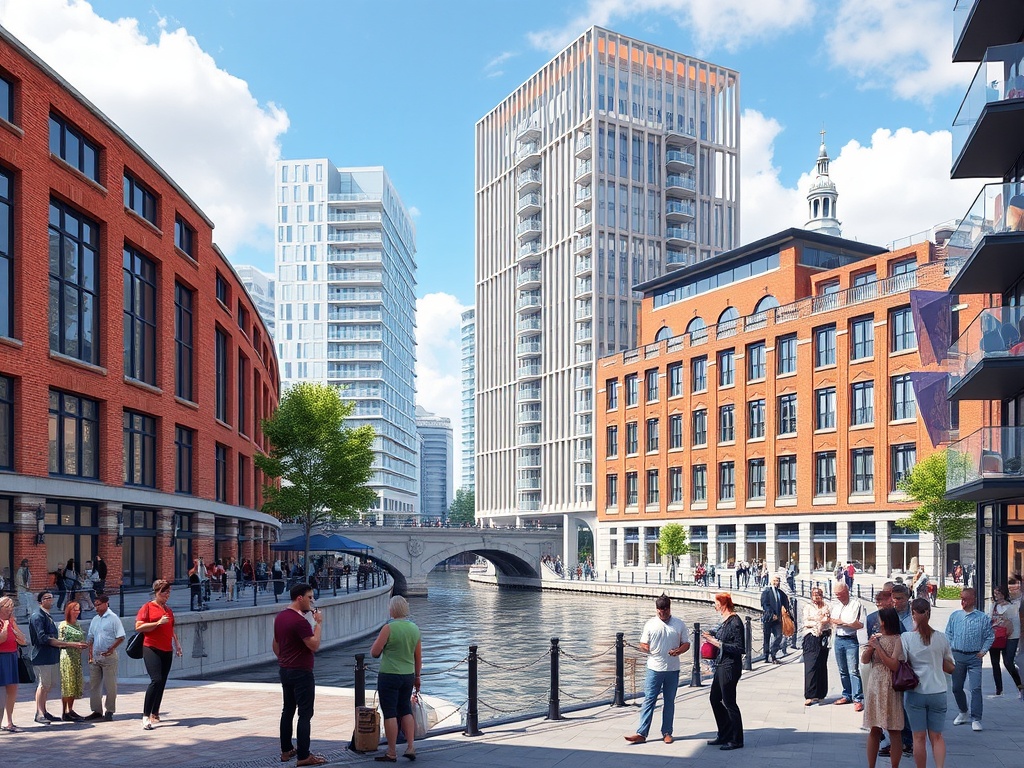Frustration Among Leasehold Flat Owners Over Slow Reforms
Leasehold flat owners across England and Wales have expressed their growing frustration with the sluggish pace of the Government’s reform program aimed at transforming this often-criticized form of property tenure. This situation was exacerbated last week when freeholders received the green light for a review of certain aspects of the Leasehold and Freehold Reform Act, which was passed by the Conservative government just before the recent election. This act was intended to simplify and reduce the costs associated with leaseholders purchasing their freeholds.
Freeholders are now arguing that the reforms infringe upon their human rights by eliminating income streams derived from ground rent and by favoring leaseholders in matters of lease extensions and enfranchisement—the process through which leaseholders seek to acquire the freehold. A significant confrontation with the Government is anticipated in July.
However, amidst the challenges, there is a glimmer of positive news. Chelsea Bridge Wharf, a prestigious Thameside site adjacent to the historic Battersea Power Station, has recently gained the right to manage its own affairs. This development empowers the 1,100 flat owners, granting them control over a site valued at over £1 billion, which comprises social housing, a hotel, and two office blocks, including the headquarters of the Berkeley Group, the very developer responsible for constructing the site.
Campaigners are understandably highlighting Chelsea Bridge Wharf as a prime example of leaseholder empowerment—an initiative that they believe should be the standard moving forward.
Understanding Leasehold vs Freehold
Freehold:
Owning a freehold means that you own the property outright, including the land on which it is built, with no expiration date. As a freeholder, you are responsible for the maintenance of your property and the land it occupies, so it is important to budget for these ongoing costs. Typically, most houses are sold as freehold.
Leasehold:
In contrast, leasehold ownership means you possess the property for a specified period while leasing it from a landlord who retains ownership of the entire building or land. Leases generally range from 90 to 999 years and are outlined in your lease agreement with the freeholder. Most flats and maisonettes are sold as leasehold properties, meaning while you own the interior of your unit, you do not own the building itself and may be required to pay regular maintenance charges.
Advocates argue that since leasehold ownership has been largely discredited by the government’s reform initiatives, all new residential developments should include provisions for a residents’ management company from the outset. This shift would ensure that flat owners, rather than offshore investors, manage the property for the benefit of the residents.
It has long been considered absurd that residential freehold investors—who typically hold a stake worth less than 3 percent of an entire building—act as landlords under English law, while flat owners remain essentially long-term tenants with leases.
The Need for Change

The leasehold system is frequently manipulated by some of the less reputable figures in the residential property market. In contrast, many other countries have adopted models like commonhold, where flat owners collectively own the building and the land, facilitating collaborative management without the involvement of a third-party landlord.
Given the complexity of a site as substantial as Chelsea Bridge Wharf, professional property management will still be necessary. However, the significant difference now is that these services will be hired and managed directly by the flat owners themselves.
Larisa Villar Hauser, a leaseholder and one of the directors of the right to manage at Chelsea Bridge Wharf, expressed her satisfaction with the ruling: “The primary advantage of our right to manage is the ability to change managing agents if they are not meeting our needs. We become the client, and the managing agent is directly accountable to us rather than the freeholder.”
While control over their living environment and potential cost savings were primary motivations for the flat owners, the immediate financial implications remain uncertain. “It’s challenging to predict if there will be any immediate savings,” stated Hauser. “Naturally, leaseholders are hopeful, but given the current state of the site, the outcome is unpredictable.”
A crucial aspect of this issue is the conduct of the Berkeley Group, known for its luxury Thames riverside apartment projects under the leadership of its now-deceased founder, Tony Pidgley. The company has been mindful of its reputation among high-end buyers, regretting its past decisions to sell off freeholds to investors who subsequently monetized these properties, as seen in cases like St George Wharf.
When dissatisfaction arose at Chelsea Bridge Wharf, and a legitimate group of leaseholders emerged to take charge of the site, Berkeley seemingly opted to cooperate rather than resist. The court’s acknowledgment last week affirmed that Berkeley “took a passive role in the proceedings,” seeking only assurance that the leaseholders’ right to manage was lawful. In contrast, investors who purchased five head leases at the property “took a more partisan approach.”
This ruling represents a landmark case in which a prominent housebuilder has willingly ceded control to leaseholders, with the added irony that its own headquarters is now part of a leaseholder-managed site. Berkeley is recognized as one of the leading and most successful plc housebuilders and notably does not belong to the Home Builders Federation lobbying group.
If a company of such influence is no longer obstructing leaseholders from taking control of their homes, it is highly likely that other housebuilders will follow suit.
Sebastian O’Kelly is a journalist and CEO of Leasehold Knowledge Partnership.




